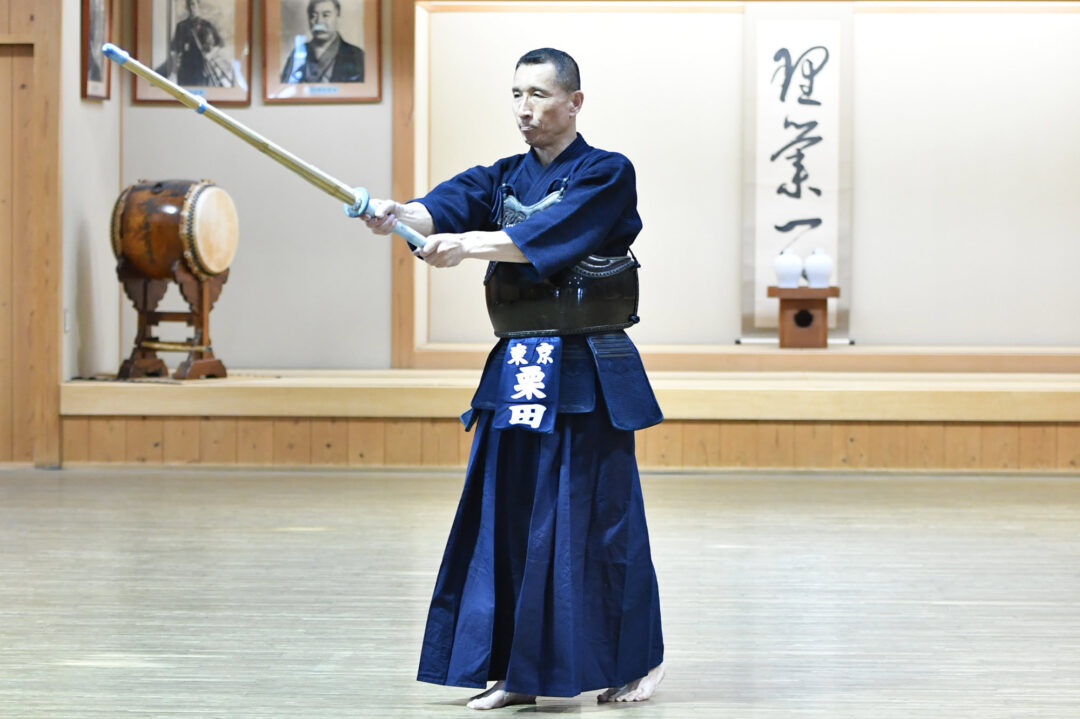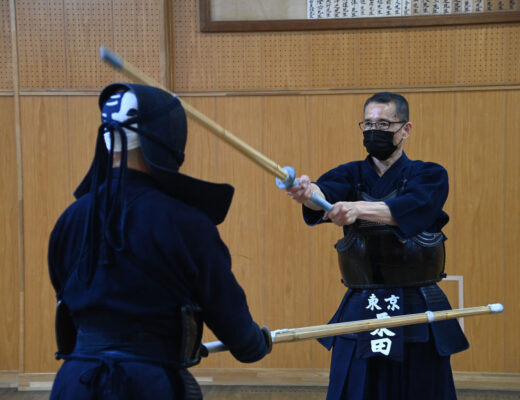2024.1 KENDOJIDAI
Translation: Pepijn Boomgaard
The father of modern Kendo, Takano Sasaburo, said that “as long as you do Suburi and running, your Kendo won’t deteriorate.” Suburi is a way of training by yourself. We will introduce the Suburi of a first-class Kendoka.
Kurita Waichiro (Hanshi 8th Dan)

Suburi is an indispensable training method for acquiring kendo techniques. In the “Kendo Teaching Guidelines” (published by the All Japanese Kendo Federation), the purpose of Suburi is stated to be “to learn Shinai control and correct Hasuji, to learn the Tenouchi necessary for striking, and to learn the basics of striking using Ashisabaki.”
During my time at the Metropolitan Police Kendo Tokuren, we did about 1000 Suburi during the winter. We would do 200 or 100 of several different types, such as Shomen, forward and backward Men, Sayu Men, and so on. During Suburi, it is important that all the strikes from start to finish meet the criteria for a valid strike. This is not an easy task, but something you constantly pay attention to.
As Suburi is a repetition of simple movements done by one’s self, it is easy to be lenient on yourself. If you do it in a group, you will feel like you can’t lose to them, so you can concentrate and perform proper cuts.
We sometimes do a 1000 Suburi at the training camps of the Canon Kendo Club or Showa University Kendo Club. It takes about 40 minutes. I give the orders and we focus on what we’re doing. It is hard practice, but we are able to complete it because we do it together with our friends who have the same aspirations. It is important to continue this practice in daily Keiko, as it will make you stronger.
I feel like practicing Suburi is a difficult problem for people who do Kendo as a hobby. The only way to get better at Kendo is by continuously practicing, but the reality is that it is difficult to devote time to Suburi during practice. It is important to understand this situation and incorporate Suburi into your practice.
When I do Suburi together with hobbyists, I try to consciously increase the number of Suburi. I try to increase it from 100 to 200 and keep that up. You won’t improve just by doing Suburi, but by taking the time to do Suburi correctly, you can learn something. It only takes five minutes to do 100 Suburi and 10 minutes to do 200.
Suburi can also be done at home. Depending on where you practice, you can also do Suburi before or after practice. By continuing to do so, you will surely improve aspects such as your Tenouchi.
During the COVID-19 pandemic, we were not able to practice with other people for a while. Because I focussed on doing correct Suburi during that time, I was able to return to normal practice without feeling much of a decline in my ability.
Once you understand the effectiveness and purpose of Suburi, it is necessary to try and learn new things while repeating these simple movements. This should motivate you to work on it.
In my case, I have several types of Shinai and Bokuto, which I use for different purposes. For example, if I want to develop strength and power, I use a Suburi-to that is heavier than a Shinai. When I want to correct my Hasuji, I use a light Bokuto. If the balance between your Tenouchi and strength is not right, your Hasuji will not be correct when you swing your Shinai up or down.
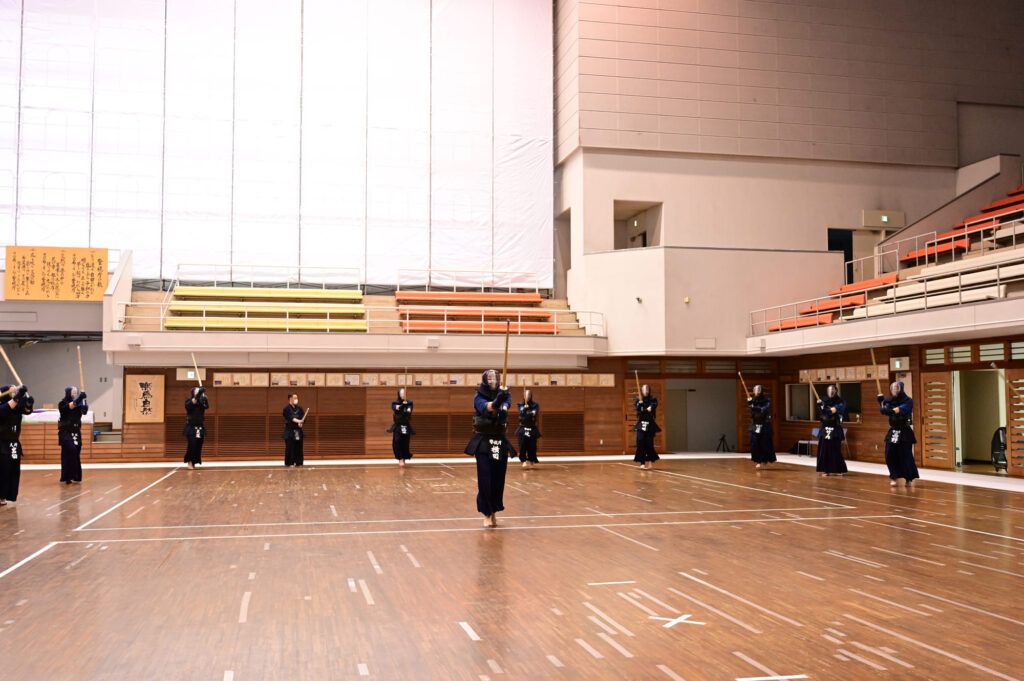
Checking your Kamae
Everyone knows that maintaining correct Kamae is more important than anything. However, when we face an opponent, we lose our Kamae when our desire to strike becomes too much and we become tense. At the Tokyo Metropolitan Police, they teach that Chudan No Kamae requires correct posture, the freedom of movement needed to attack and defend, no openings, an open mind and a strong body. The grip of the Shinai and the stance of the feet are particularly important in Kamae. When holding the Shinai, the left hand should be at the bottom of the Tsuka, and the right hand should be slightly removed from the Tsuba. The point in between the base of the thumb and index finger of both hands should be on the same line as the Tsuru. As for the feet, stand up straight in a natural position and place your heels together at a 45 degree angle. Then rotate your heels to the outside. This is the width of your feet in Chudan No Kamae. Furthermore, the right foot is positioned one foot or one and a half foot’s length in front of your left foot.
The left heel should be slightly raised and the right heel should be raised just enough so that you could slide a thin sheet of paper underneath it. This posture should be maintained at all times, not only when doing Suburi, but also when practicing with another person.
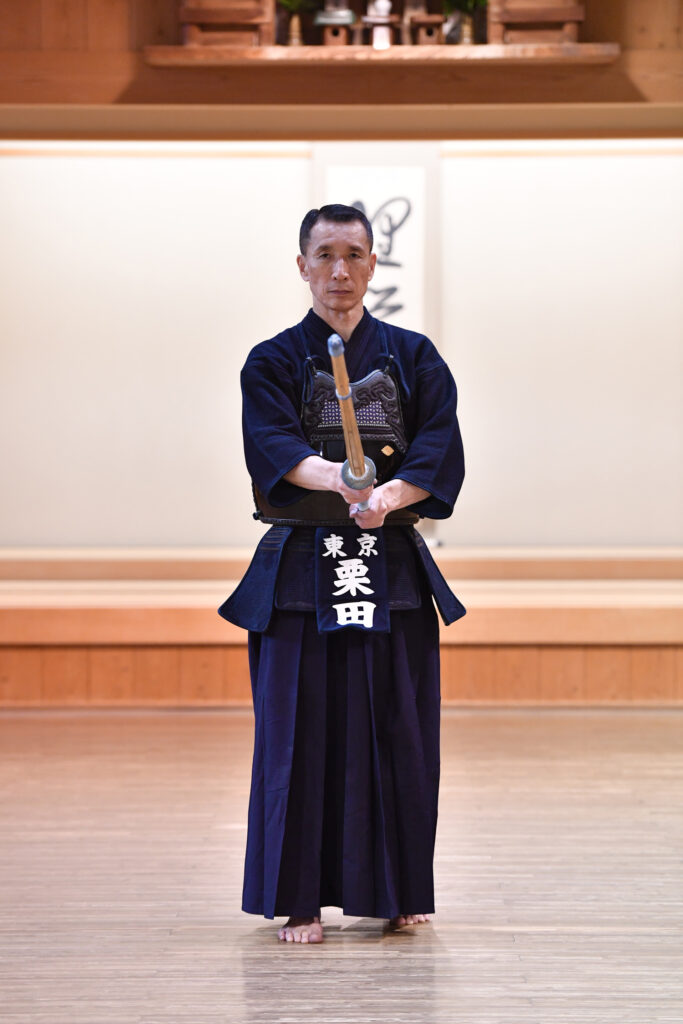
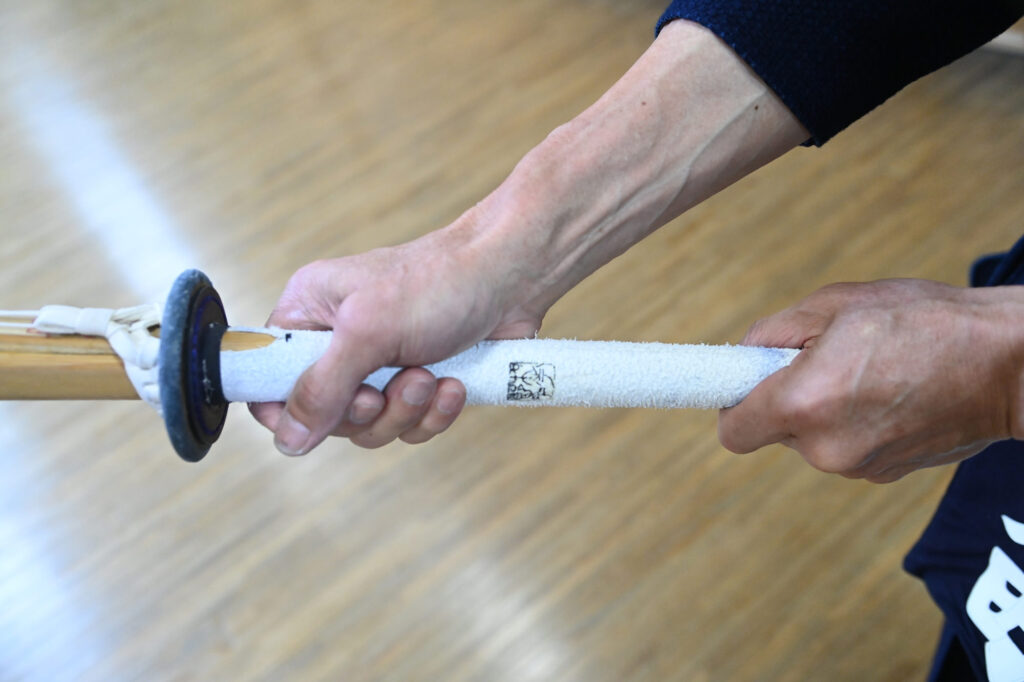
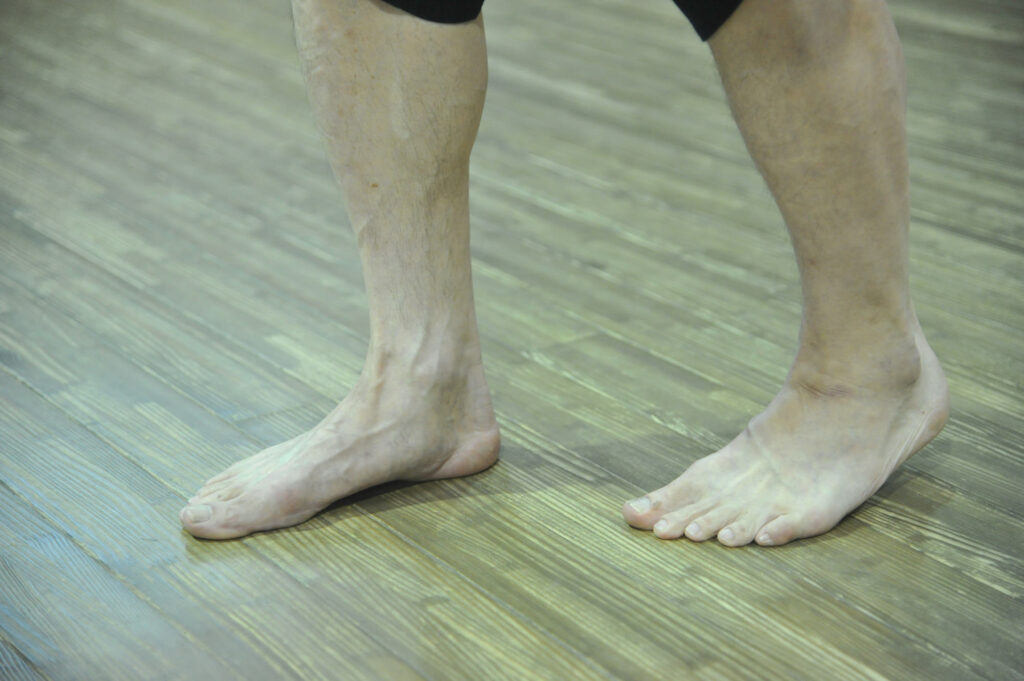
Swing straight while feeling the weight of your Shinai
The basic way to do Suburi is by swinging the Shinai straight up and down using your shoulders as fulcrum. When doing Men Suburi, swing up until your left fist is one first away from the front of your head, and swing down with your shoulder as the fulcrum, using a circular motion while making full use of your shoulder, elbow, wrist and finger joints. Swing while concentrating power in the Monouchi of your Shinai. This will add Sae to your strikes. Swing down with the intention of cutting through your opponent’s ears and chin.
It is difficult to swing straight if you put too much strength into your upper body. If you are too focussed on swinging fast, you will put strength into your right hand. Instead, swing while feeling the weight of the Shinai. At the moment of impact, clench your Shinai with all your fingers and immediately relax them afterwards. By instantaneously tensing and releasing the tension in your hands, you can create Sae.
As for your body, starting in Chudan, use your left big toe to push your body forward, and instantly pull your left foot forward. It is important to firmly push with the base of your left foot. This will help you do Fumikomi from your hips. It is important to move your body using big movements, but make sure that your body does not move up and down when doing so. The hips should move parallel to the floor.
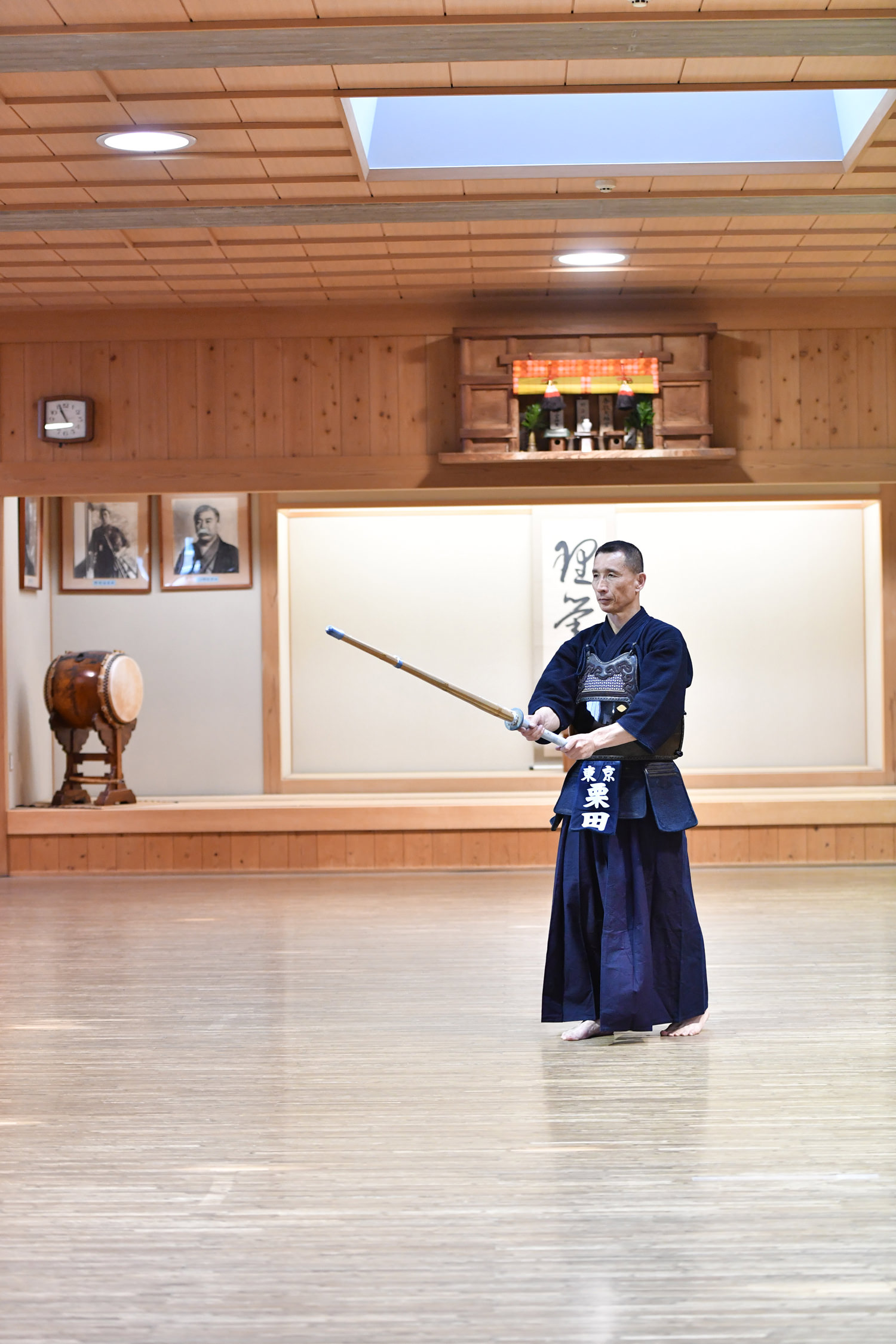

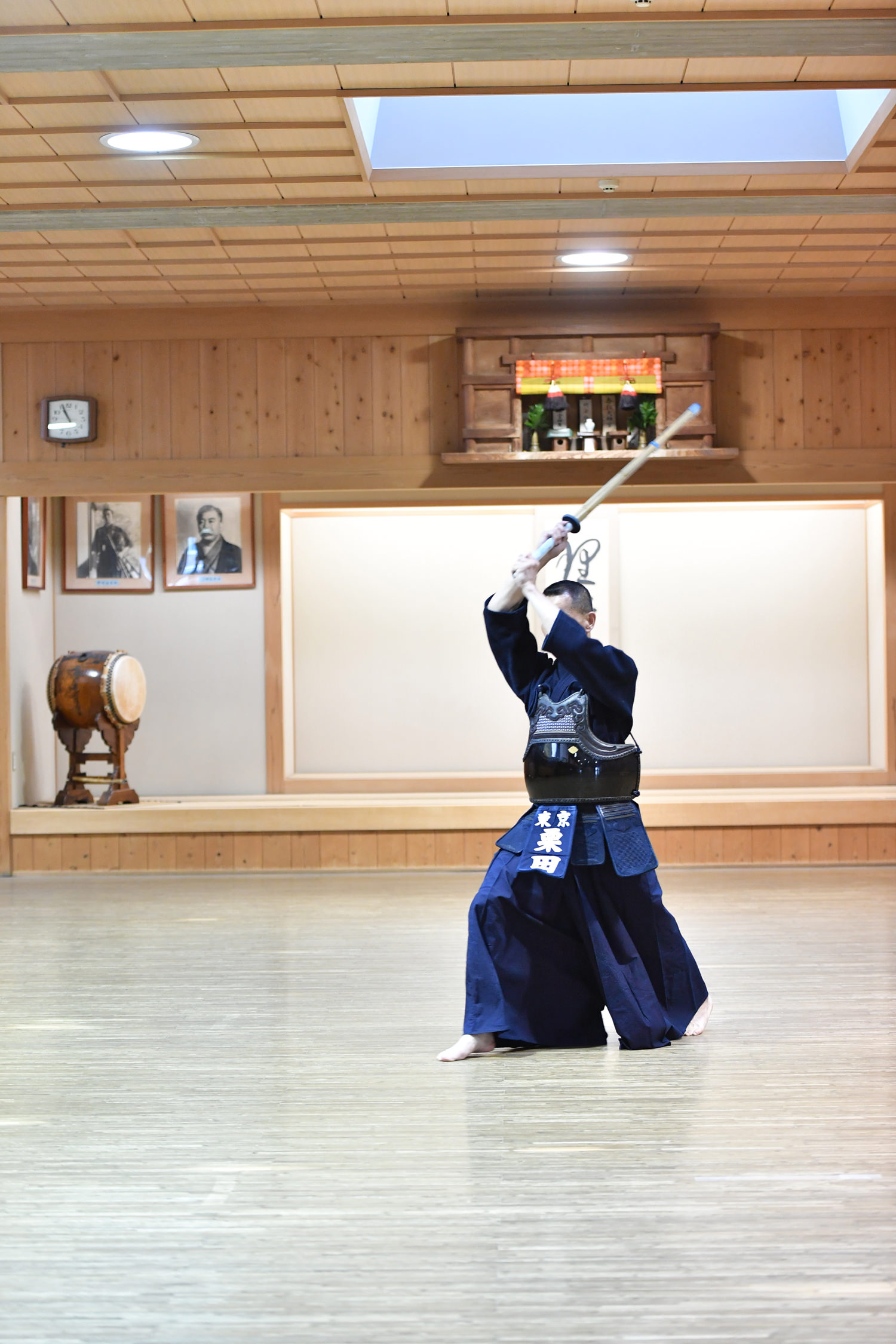

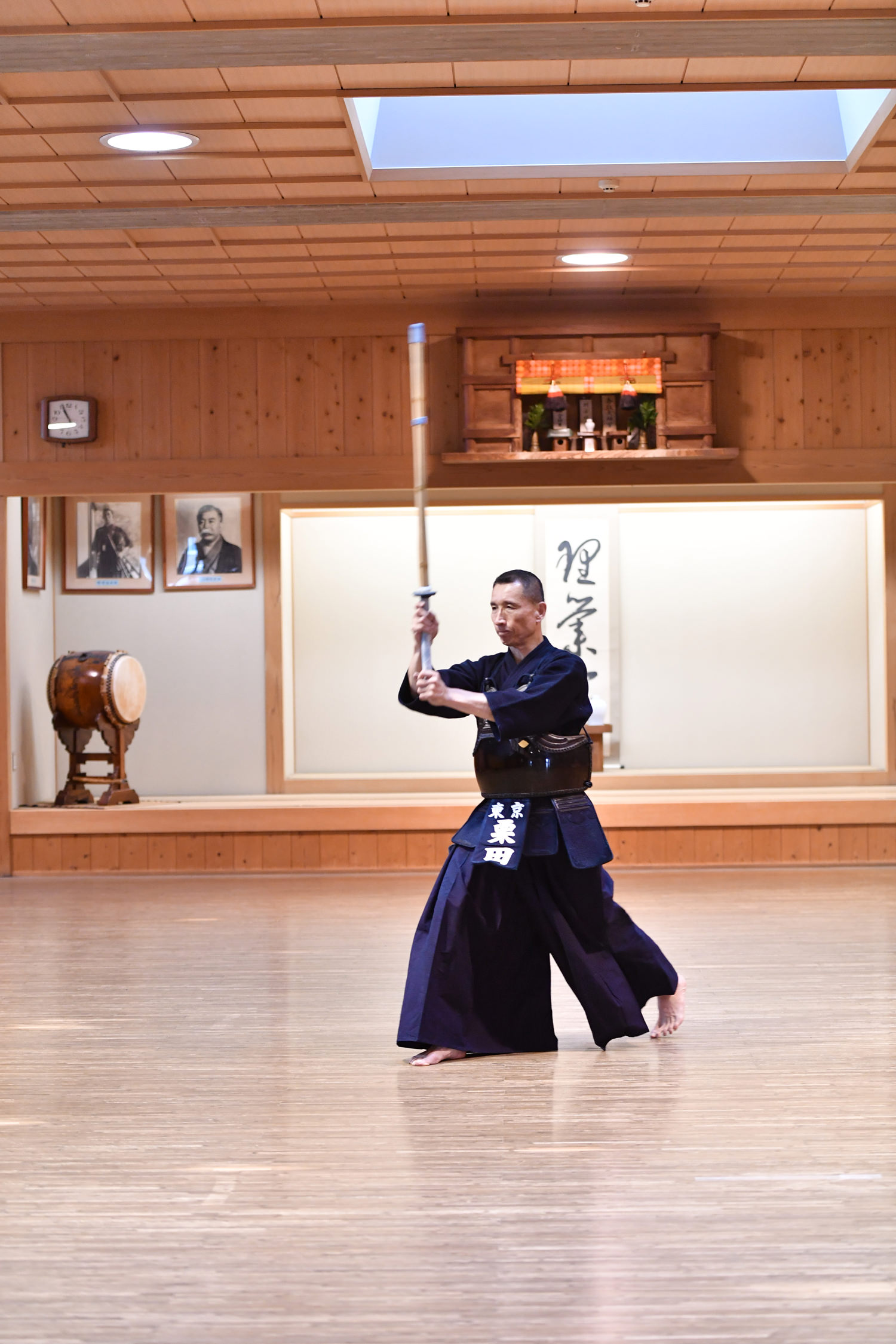
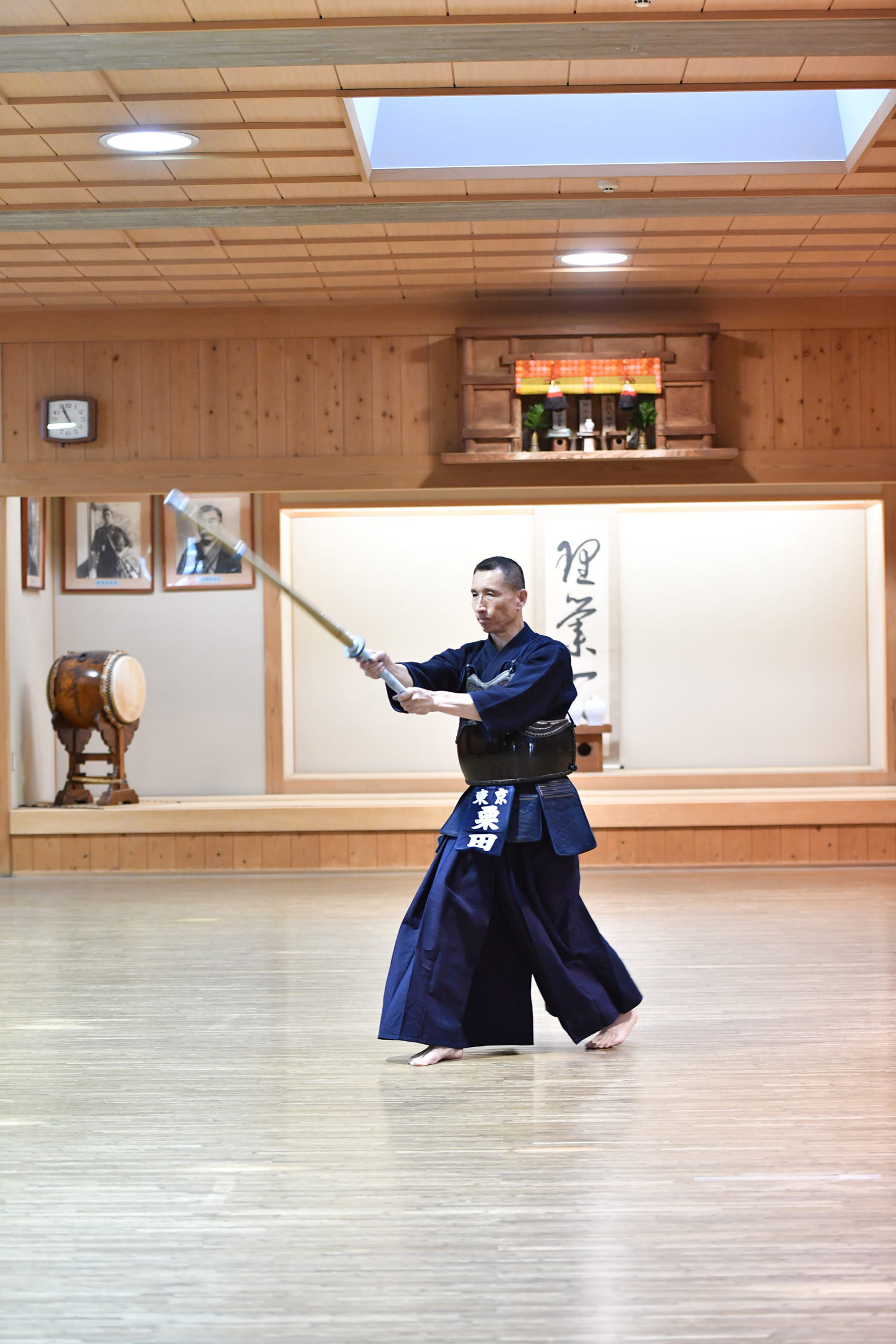
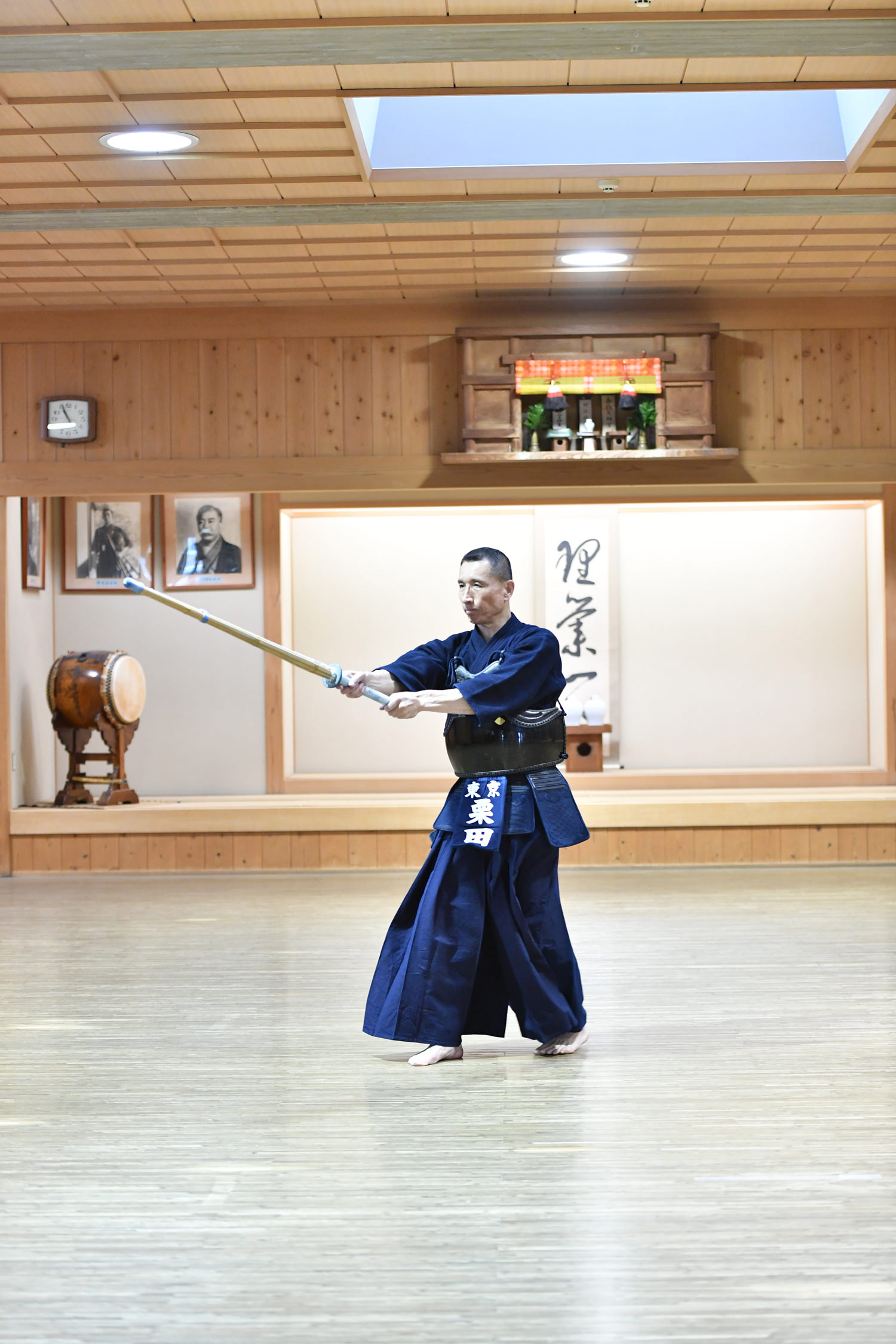
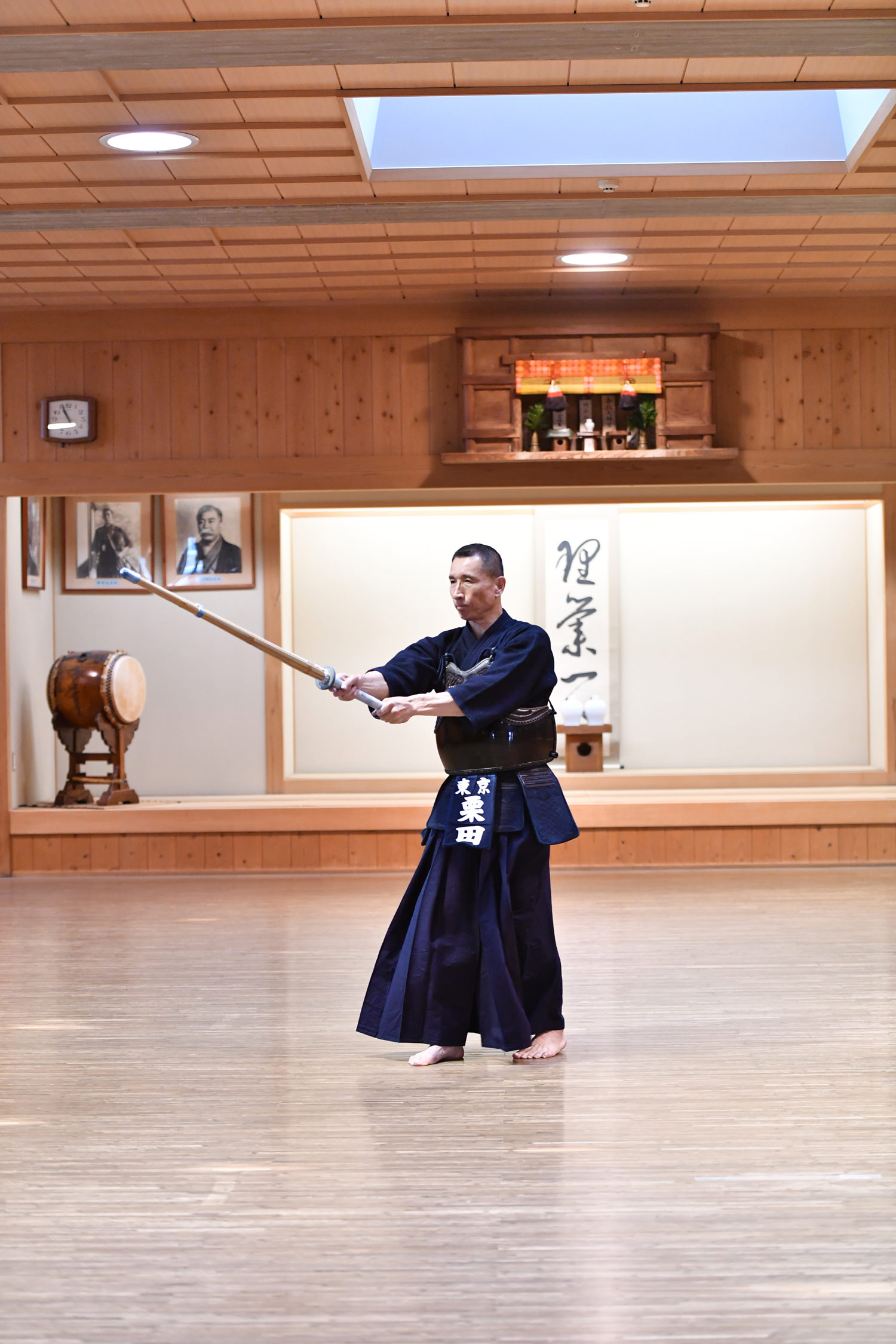
Use to Sububri to learn how to strike
Because we wear Bogu when doing Uchikomi, our grip feels different than when doing Suburi. However, we have to try to use the same movements as much as possible.
Uchikomi is often centered around Men-uchi. Be careful when using small, sharp strikes. Even when using small strikes, the left first must be raised to shoulder height in order to create Sae. When practicing, enrich your spirit at the distance where your Kensen do not touch. Enter striking distance and push with your left foot and use the whole sole of your right foot to strongly do Fumikomi and then quickly pull your left foot forward. If you don’t push strongly with your left foot, you won’t be able to get a strong Fumikomi with your right foot.
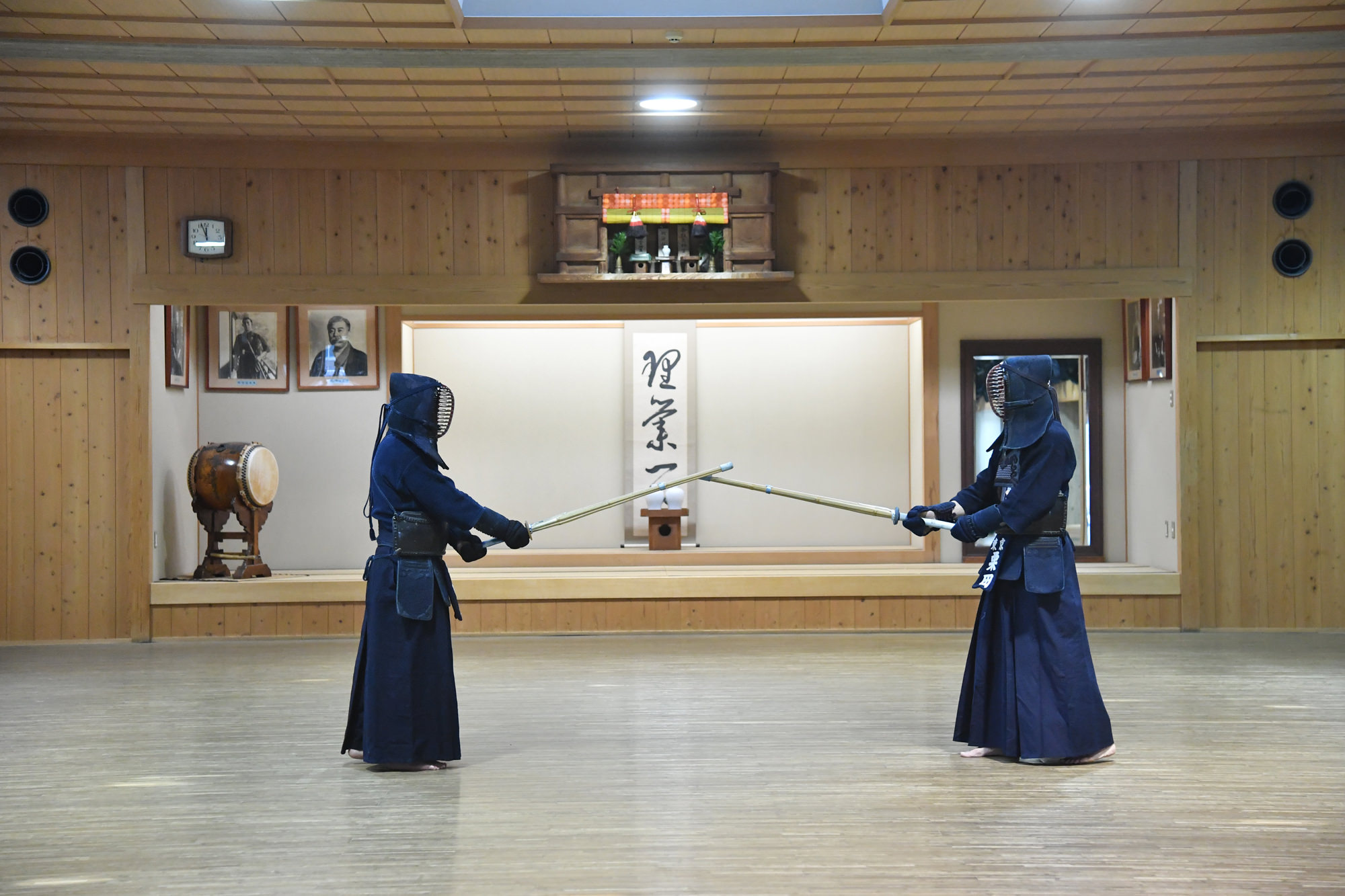
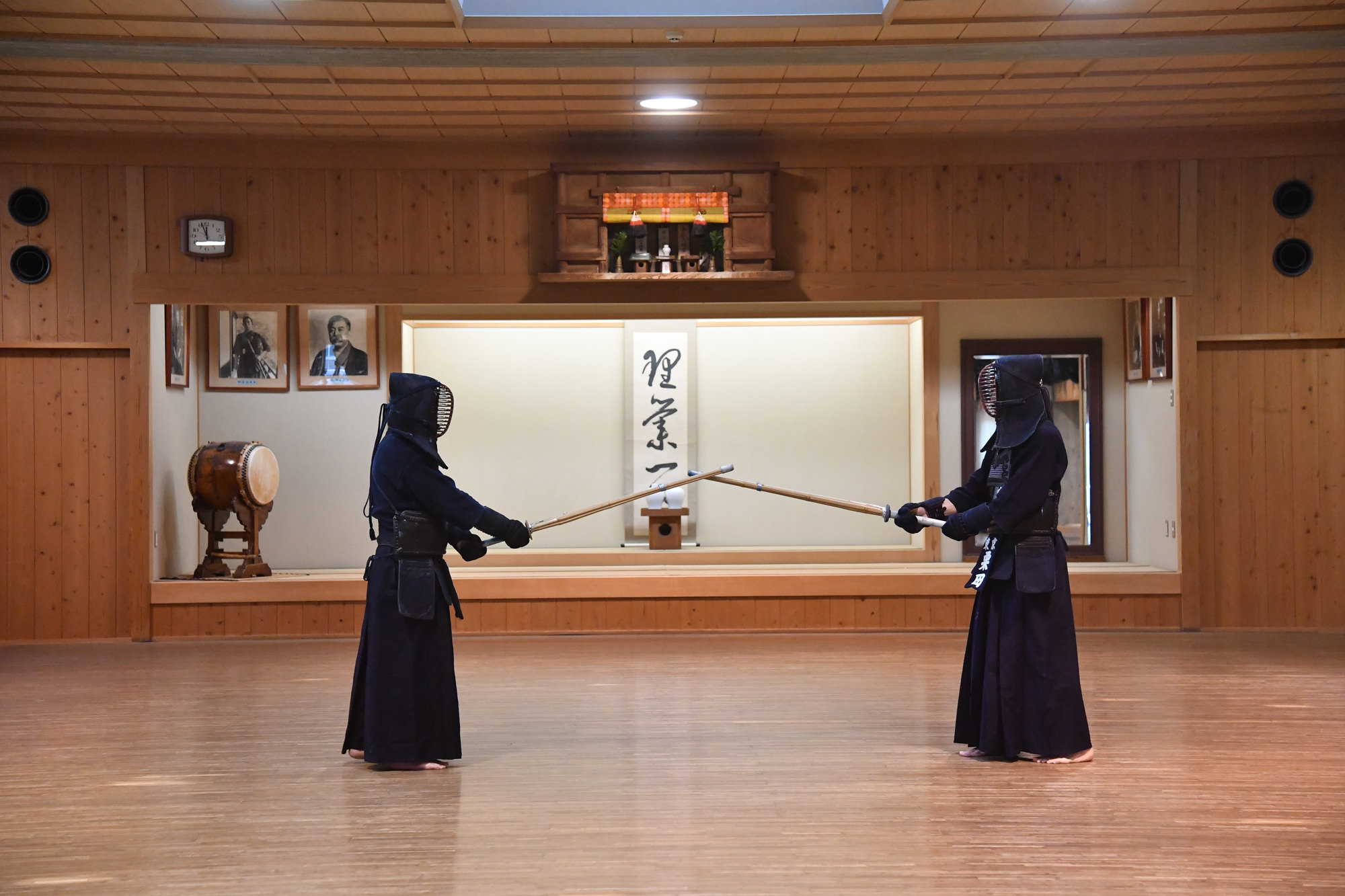

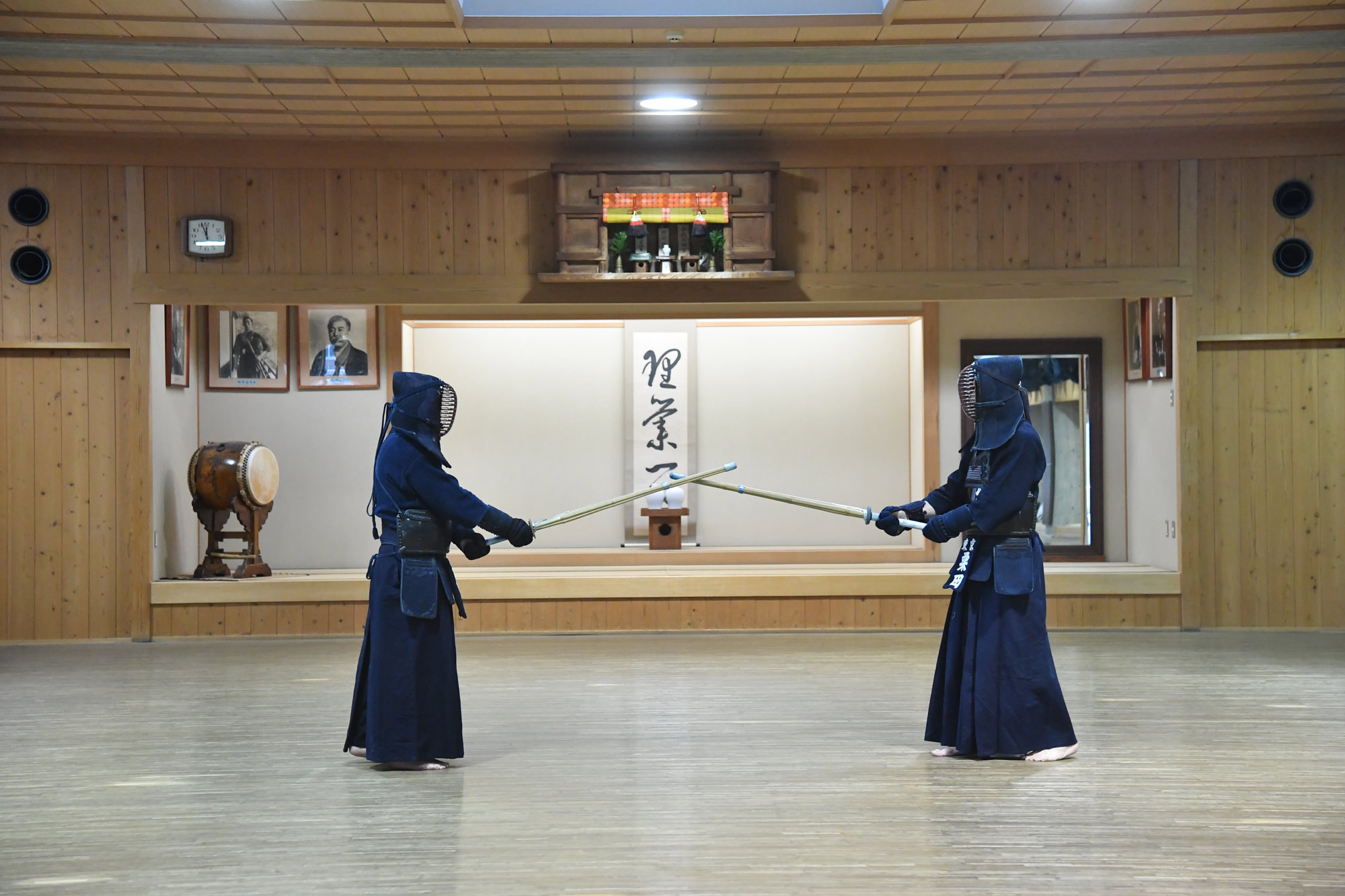
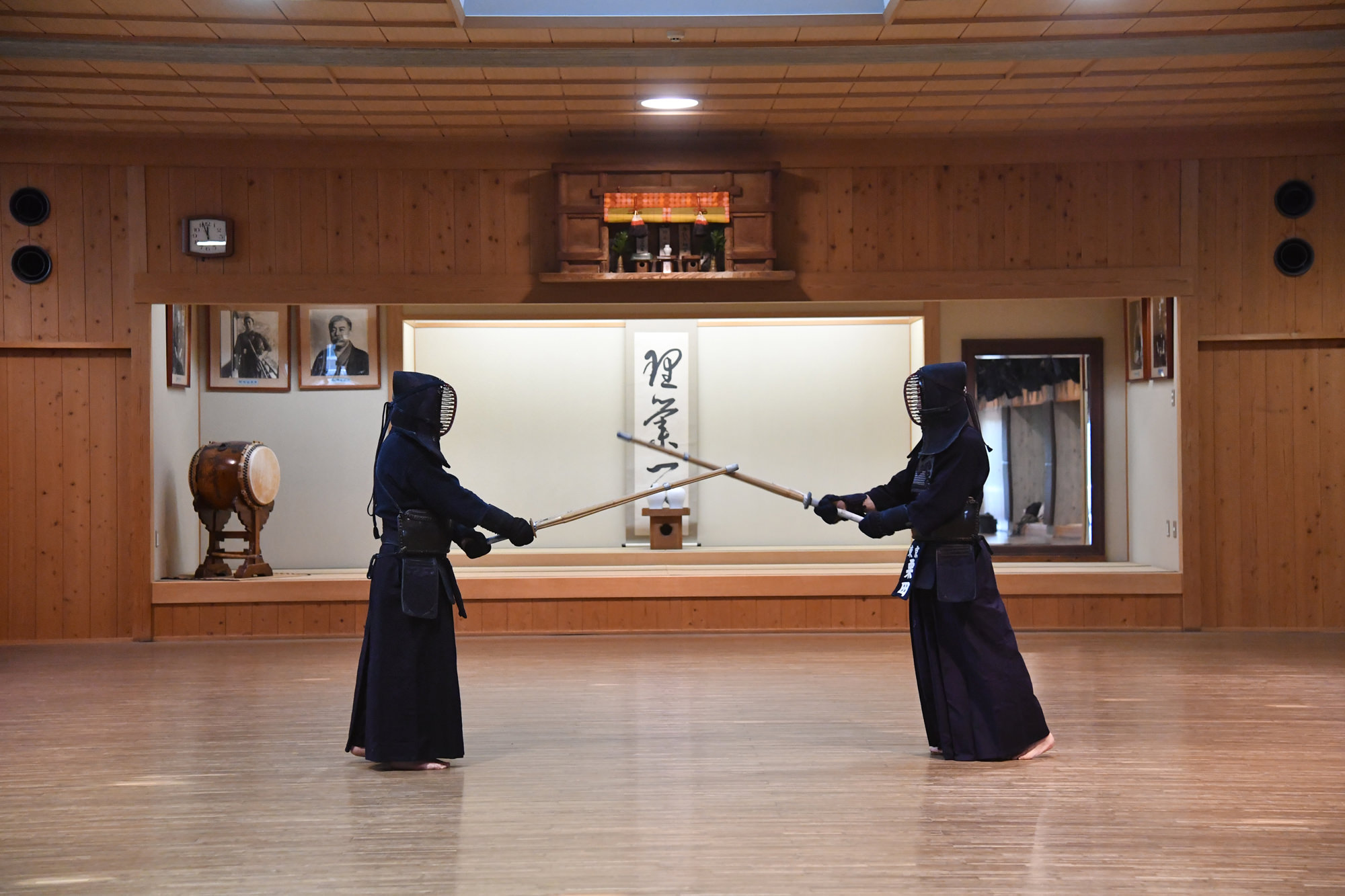
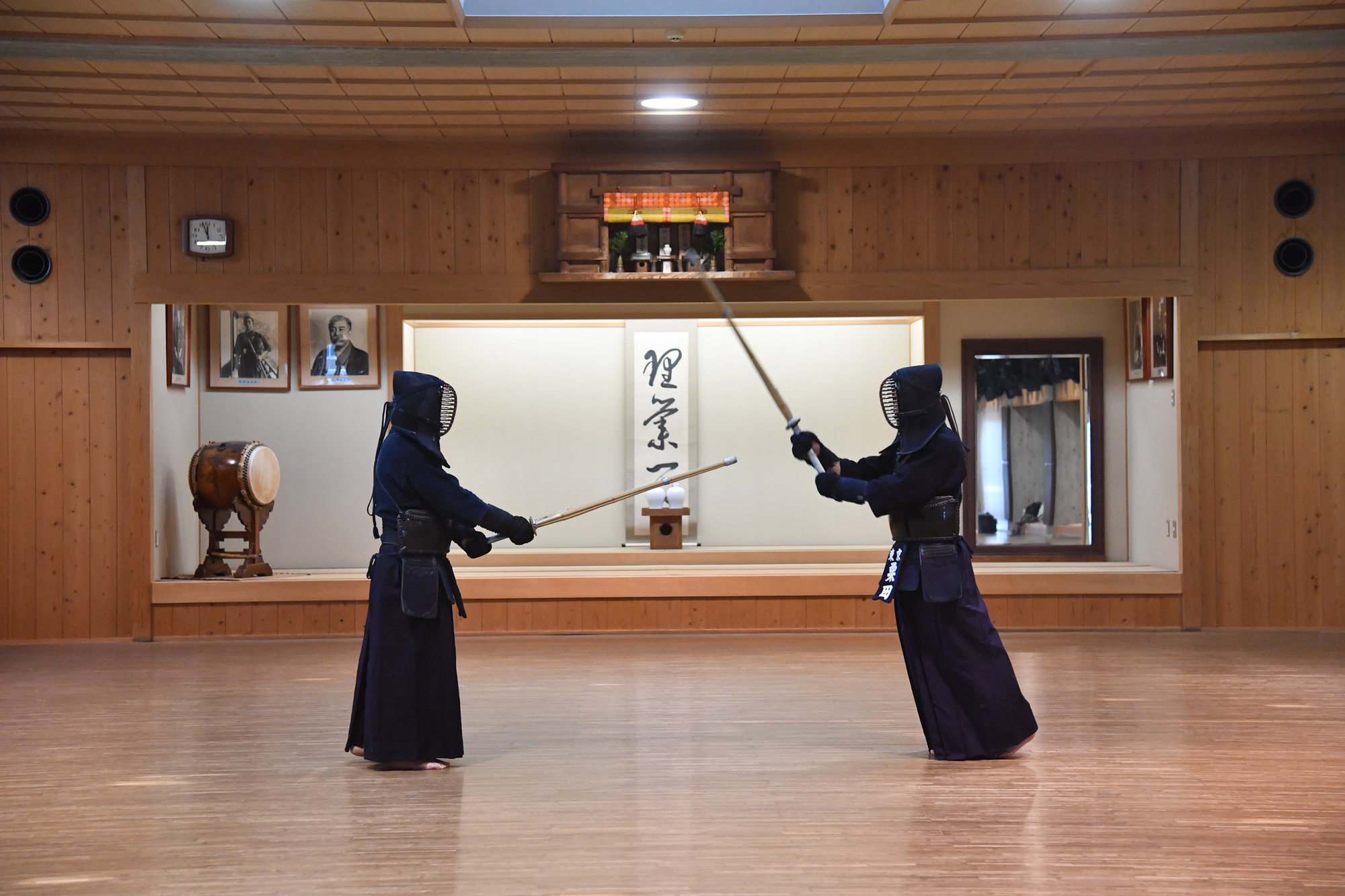
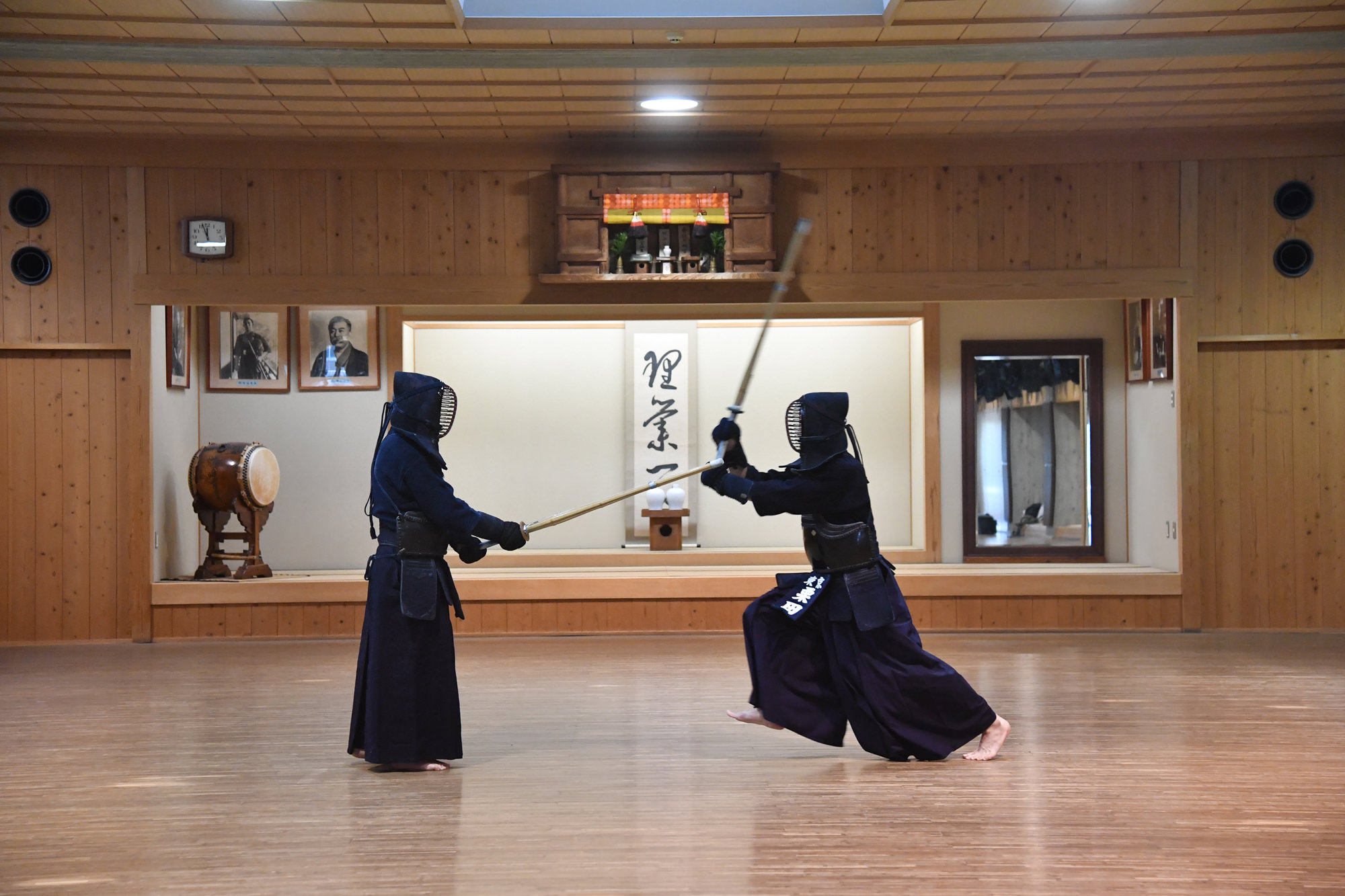
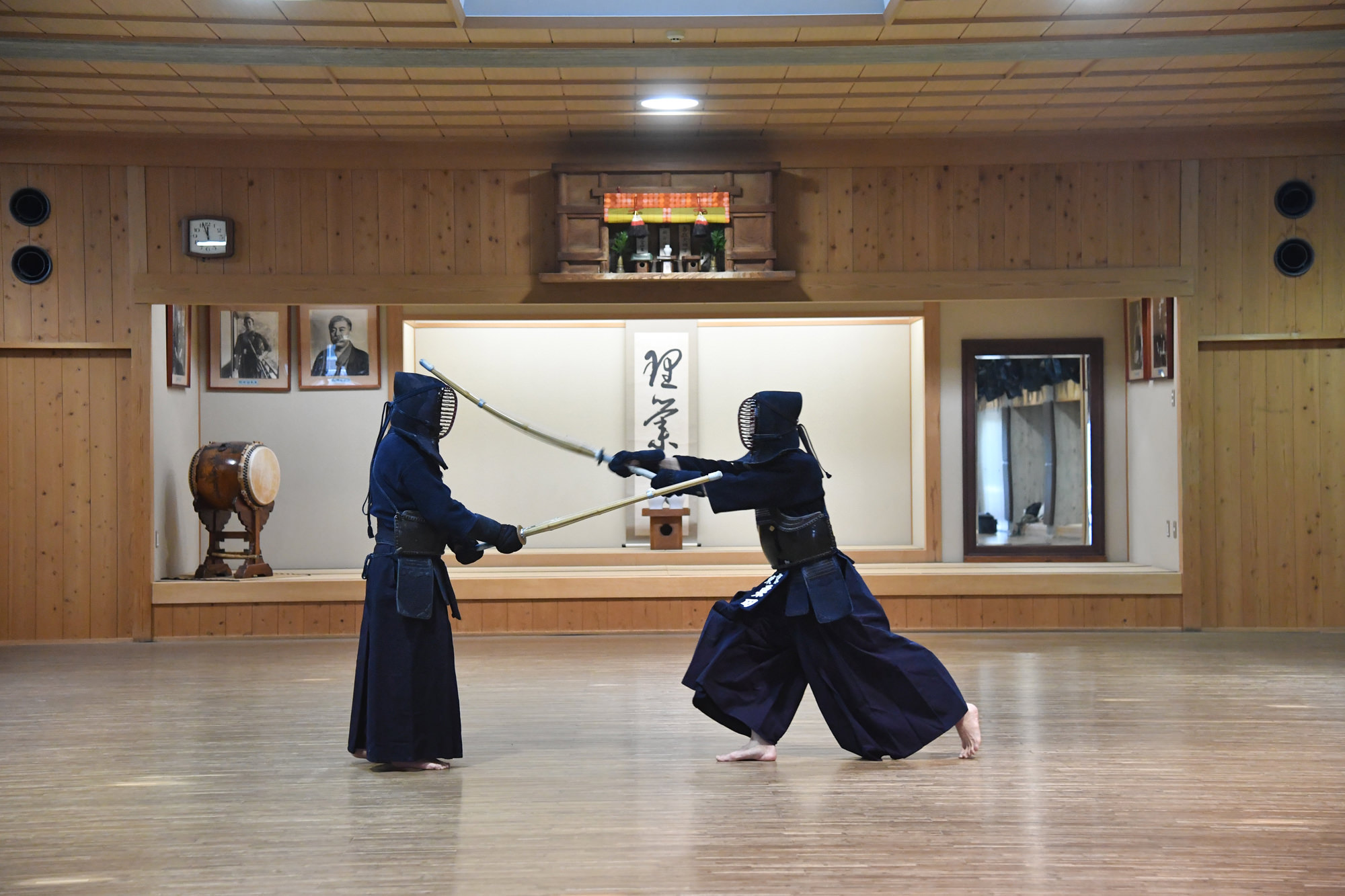
Practice with the same tension as a match
One of the purposes of Jigeiko is to test whether you can unaffectedly produce the things you have learnt through Suburi and Uchikomi. A valid strike is one where the striking area is struck correctly with the correct part of the Shinai with spirit, good posture, and Zanshin. By holding yourself to this high standard, you can improve the quality of your training.
Jigeiko might feel fulfilling when you and your partner strike each other, but if your Keiko is not connected to a real match, you are just practicing for the sake of practicing.
During matches and examinations, there is a starting line. In everyday practice, you should start from the distance of this starting line. In a match, we do not start from the point where the Kensen are touching. As we move from To-ma to Issoku Itto No Maai, we pressure each other and look for an opening. It is important to always be aware of this and maintain a sense of tension. Sometimes we lose tension after we strike, but during a real match, this is fatal. There is a saying that goes, “Practice as if it were a match, and your match will be like practice.” It is not easy to feel like you are practicing when you are nervous during a match. However, depending on your attitude, it is possible to maintain that same tension in practice.
During a real match, unnatural power tends to enter your body as the distance closes. If power enters your shoulders and arms, you will lose your correct Kamae and your grip changes. Because of this, you won’t be able to move your Shinai accurately. The elements of a valid strike are power and Sae, Tenouchi, body movement, opportunity, and Maai. If you lose your Kamae, you cannot strike with power and Sae. It is important to stay relaxed as you close the distance.
During my Tokuren days, I admired the Kendo of the late Nakamura Takeshi Sensei. After he graduated from Kyushu Gakuin, Nakamura Sensei started working at the Metropolitan Police Department and participated in various tournaments, including the All Japan Kendo Championship. He also won the Meiji Mura Kendo Tournament during his first appearance. Nakamura Sensei’s kendo was almost the same whether in practice or in a match. His brilliant Ippon were something everyone admired. I would like to do the same kind of Kendo. I am still practicing, but every day I feel that there is still a long way to go.

